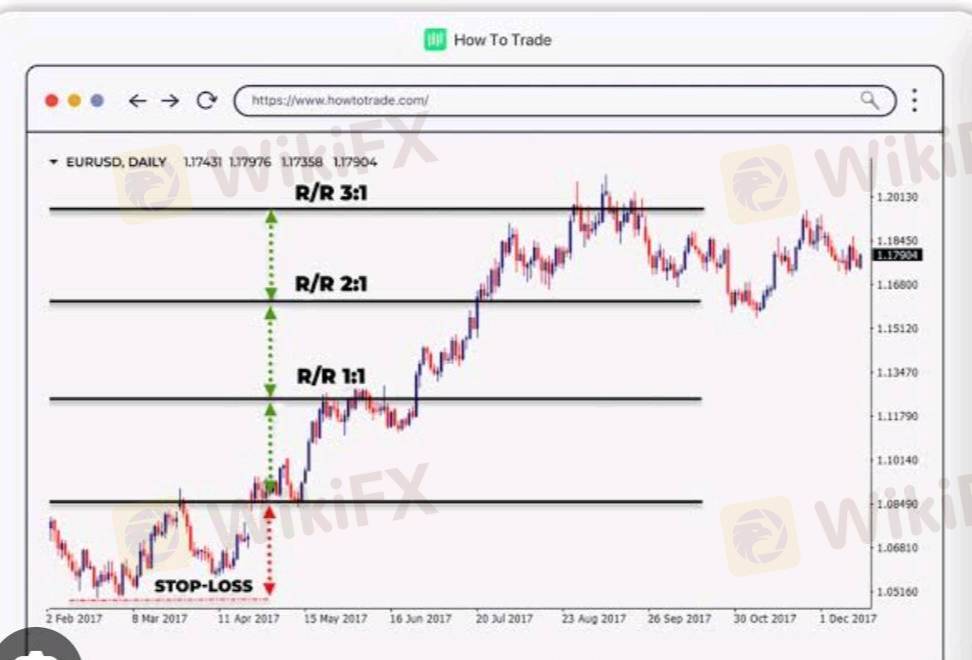
2025-02-06 04:04
IndustriFollow a risk reward ratio in forex trading.
#firstdealofthenewyearAKEEL
The risk-reward ratio (R:R) is a critical concept in forex trading, helping traders assess the potential reward for every unit of risk they take. Here's a guide to following an effective risk-reward ratio:
1.Define the Risk-Reward Ratio
The risk is the amount you're willing to lose on a trade.
The reward is the potential profit you're aiming to achieve.
A common ratio is 1:2, meaning for every $1 risked, you aim to make $2.
2.Set Your Stop-Loss and Take-Profit Levels
Use a stop-loss to limit your potential loss.
Set a realistic take-profit target based on market conditions and analysis.
Ensure the distance between your entry point and take-profit level is at least twice the distance to your stop-loss for a 1:2 ratio.
3.Analyze Market Conditions
Identify key support and resistance levels to place your stop-loss and take-profit.
Ensure the potential reward is achievable based on the market's volatility and trend.
4.Avoid Chasing Trades
Do not enter trades where the risk-reward ratio doesn't meet your criteria, even if the trade looks promising.
Be disciplined in rejecting trades that fall below your target ratio.
5.Use Consistent Position Sizing
Never risk more than 1-2% of your trading account on a single trade.
Adjust your lot size based on the stop-loss distance and your risk percentage.
6.Review and Adjust as Needed
Analyze your trading journal to ensure you're consistently following your risk-reward ratio.
Fine-tune your strategy if the ratio is not yielding expected results in specific market conditions.
Examples of Risk-Reward Ratios
1:1 - Minimum acceptable for some strategies but provides little margin for error.
1:2 - Common standard, balancing risk and reward.
1:3 or higher - Preferred for trend-following strategies but may require more patience.
By adhering to a sound risk-reward ratio, you can minimize losses, maximize profits, and maintain long-term profitability in forex trading.
#firstdealofthenewyearAKEEL
Suka 0
Mky9196
交易者
Diskusi populer
Industri
СЕКРЕТ ЖЕНСКОГО ФОРЕКСА
Industri
УКРАИНА СОБИРАЕТСЯ СТАТЬ ЛИДЕРОМ НА РЫНКЕ NFT
Industri
Alasan Investasi Bodong Tumbuh Subur di Indonesia
Industri
Forex Eropa EURUSD 29 Maret: Berusaha Naik dari Terendah 4 Bulan
Analisis pasar
Bursa Asia Kebakaran, Eh... IHSG Ikut-ikutan
Analisis pasar
Kinerja BUMN Karya Disinggung Dahlan Iskan, Sahamnya Pada Rontok
Klasifikasi pasar

Platform

Pameran

Agen

Perekrutan

EA

Industri

Pasar

Indeks
Follow a risk reward ratio in forex trading.
 Nigeria | 2025-02-06 04:04
Nigeria | 2025-02-06 04:04#firstdealofthenewyearAKEEL
The risk-reward ratio (R:R) is a critical concept in forex trading, helping traders assess the potential reward for every unit of risk they take. Here's a guide to following an effective risk-reward ratio:
1.Define the Risk-Reward Ratio
The risk is the amount you're willing to lose on a trade.
The reward is the potential profit you're aiming to achieve.
A common ratio is 1:2, meaning for every $1 risked, you aim to make $2.
2.Set Your Stop-Loss and Take-Profit Levels
Use a stop-loss to limit your potential loss.
Set a realistic take-profit target based on market conditions and analysis.
Ensure the distance between your entry point and take-profit level is at least twice the distance to your stop-loss for a 1:2 ratio.
3.Analyze Market Conditions
Identify key support and resistance levels to place your stop-loss and take-profit.
Ensure the potential reward is achievable based on the market's volatility and trend.
4.Avoid Chasing Trades
Do not enter trades where the risk-reward ratio doesn't meet your criteria, even if the trade looks promising.
Be disciplined in rejecting trades that fall below your target ratio.
5.Use Consistent Position Sizing
Never risk more than 1-2% of your trading account on a single trade.
Adjust your lot size based on the stop-loss distance and your risk percentage.
6.Review and Adjust as Needed
Analyze your trading journal to ensure you're consistently following your risk-reward ratio.
Fine-tune your strategy if the ratio is not yielding expected results in specific market conditions.
Examples of Risk-Reward Ratios
1:1 - Minimum acceptable for some strategies but provides little margin for error.
1:2 - Common standard, balancing risk and reward.
1:3 or higher - Preferred for trend-following strategies but may require more patience.
By adhering to a sound risk-reward ratio, you can minimize losses, maximize profits, and maintain long-term profitability in forex trading.
#firstdealofthenewyearAKEEL
Suka 0
Saya juga ingin komentar
Tanyakan pertanyaan
0Komentar

Belum ada yang berkomentar, segera jadi yang pertama

Tanyakan pertanyaan
Belum ada yang berkomentar, segera jadi yang pertama